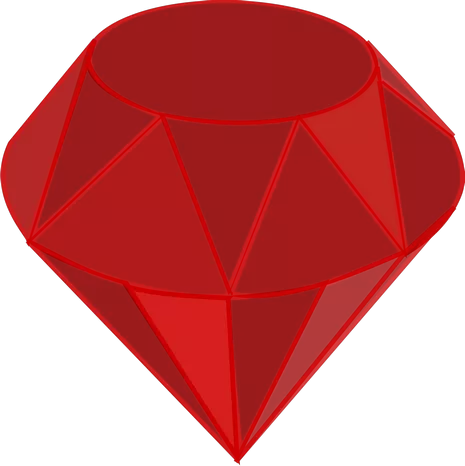Rubies, with their captivating red hues and timeless allure, have long been cherished as one of the world’s most precious gemstones. These exquisite gems symbolize passion, power, and love, captivating the hearts of gemstone enthusiasts and collectors alike. However, not all rubies are created equal when it comes to value. In this article, we delve into the intricate world of rubies and unveil the factors that contribute to determining the most valuable types of these mesmerizing gemstones.
Understanding the Rarity of Rubies:
Rubies belong to the corundum mineral family, which also includes sapphires. While sapphires come in a wide range of colors, rubies are specifically known for their vibrant red hues. This striking color is attributed to the presence of chromium impurities within the crystal structure during formation. The scarcity of rubies in nature makes them highly sought after, as finding high-quality specimens can be quite rare.
Evaluating Color: The Pinnacle of Value:
Color is the most crucial factor when determining the value of a ruby. The finest rubies exhibit a vivid and intense red hue, often referred to as “pigeon blood red.” This term describes a deep crimson color with a slight hint of blue. The color saturation and tone play a significant role in a ruby’s value, with more vibrant and evenly distributed red tones commanding higher prices. Rubies with secondary hues, such as purplish or pinkish undertones, may still be valuable but typically rank slightly lower in terms of desirability and price.
Assessing Clarity: Flawless Beauty vs. Natural Inclusions:
Clarity refers to the presence or absence of internal characteristics, known as inclusions, within the ruby. While flawless rubies are exceptionally rare, the presence of some inclusions does not necessarily diminish a ruby’s value. In fact, certain types of inclusions can enhance the character and authenticity of a ruby. However, excessive inclusions that affect the gemstone’s transparency and overall appearance may lower its value.
Examining Cut and Carat Weight:
The precision and quality of a ruby’s cut significantly impact its beauty and brilliance. A well-cut ruby maximizes light reflection and refraction, allowing the gemstone to exhibit its full potential. Skilled lapidaries take into consideration the stone’s shape, size, and natural crystal structure when determining the ideal cut. Additionally, carat weight—the measure of a ruby’s size and mass—plays a role in its value, with larger rubies generally commanding higher prices.
Origin and Geographic Influence:
The geographical origin of a ruby can also influence its value. Certain regions have gained a reputation for producing rubies of exceptional quality and desirability. Historically, Myanmar (formerly Burma) has been renowned for its exquisite “Mogok Valley” rubies, known for their intense red color and fine clarity. Other notable sources include Thailand, Sri Lanka, Madagascar, and Tanzania, each contributing unique characteristics to the rubies they yield. Rubies from renowned origins often command higher prices due to their reputation for superior quality.
Heat Treatment and Enhancement:
It is important to note that heat treatment is a common practice in the ruby industry. This process involves subjecting the gemstone to high temperatures to enhance its color and clarity, making it more visually appealing. Heat-treated rubies can still be valuable, but natural, untreated rubies are generally considered rarer and more prized. Disclosing any treatments is essential in determining a ruby’s value and ensuring transparency in the gemstone market.
Market Demand and Trends:
Market demand and trends also play a significant role in determining the value of rubies. Cultural preferences, fashion trends, and shifts in consumer tastes can influence the perceived desirability and subsequently, the market value of ruby gemstones. While classic pigeon blood red rubies have historically been highly sought after, there may be periods where other shades and hues gain popularity, impacting the market value accordingly.
Rarity and Investment Value:
The rarity of high-quality rubies contributes to their exceptional value as investment assets. Fine rubies are not only prized for their intrinsic beauty but also considered a secure store of wealth. The limited availability of top-grade rubies ensures their enduring value and potential for appreciation over time, making them an attractive choice for investors seeking alternative assets.
Conclusion:
When it comes to determining the value of rubies, several factors come into play. The color, particularly the intensity and distribution of red tones, is paramount in evaluating a ruby’s worth. Clarity, while considering the presence of natural inclusions, should not compromise the stone’s overall beauty and transparency. The precision cut and carat weight also contribute to the final assessment. Additionally, the geographical origin of a ruby and its reputation for producing high-quality stones can influence its value. Market demand and trends, as well as the rarity of certain rubies, also play a role in determining their worth.
In conclusion, the most valuable rubies are those that possess exceptional color, with intense red hues preferably in the pigeon blood red range. The absence of excessive inclusions, along with a precise cut that maximizes the gemstone’s beauty and brilliance, further enhances a ruby’s value. Rubies from renowned sources and those that have not undergone heat treatment are generally considered more valuable due to their rarity. Ultimately, the value of a ruby is a combination of its inherent qualities, market demand, and individual preferences. As you explore the mesmerizing world of rubies, remember that each stone holds its own unique beauty and story, making them true treasures of nature.
Related topics:
- Is ruby expensive: Factors Influencing Ruby Prices
- What do raw rubies look like: A Quick Guide
- Exploring the Origins of Ruby: Where Is it Found?


